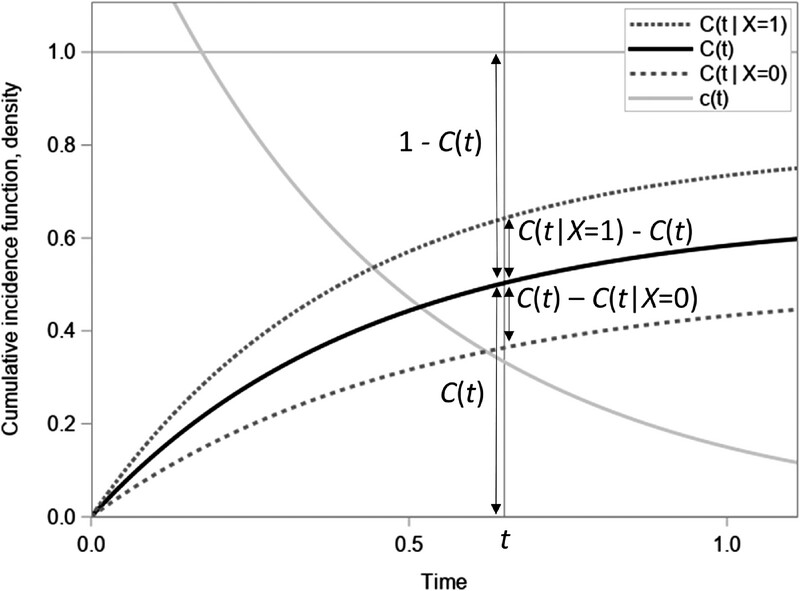March 27, 2024
In this article, the authors described their Schemper-Henderson measure to account for explained variation for survival outcomes, extended to allow for competing risks. They defied explained variation as the relative gain in predictive accuracy when prediction is based on prognostic factors that replaces unconditional prediction. Essentially, the proportion of variation in the survival outcomes ended up being attributed to single or multiple prognostic factors. It also was aligned with “Importance” of a prognostic factor. They called their measure, V. Their measure accounts for predictive inaccuracy with covariates versus without accounting for covariates. They only allowed for one competing event and have not extended to multistate models. Their measure used the cumulative incidence function, CIF, to account for competing risks in the estimation of survival where it takes the ratio between observed and expected cumulative incidence.
They then proposed direct and indirect estimates of their measure, EVCR. The direct estimates contrasted observed and expected outcomes and revealed the way censored observations and CE are taken into account. The indirect estimate replaced population values for CIFs by appropriate consistent point estimates where the expectation was by averaging and the integration was by summing. Finally, they ran their methods through simulations and also through a real data example. They did admit that if the effect of the prognostic factor is high than it may explain little of the variability in the outcome so once has to be careful in estimating hazard ratios. The authors had not shown alternative survival measures. The method was not perfect and then always depends upon other factors in the estimation.
Written by,
Usha Govindarajulu, PhD
Keywords: explained variation, survival analysis, competing risks
References
Gleiss A, Gnant M, and Schemper M. (2024) “Explained variation and degress of necessity and of sufficiency for competing risks survival data”. Biometrical Journal. https://doi.org/10.1002/bimj.202300140
https://onlinelibrary.wiley.com/cms/asset/08b9582e-f005-4080-836c-13a3c139d1a6/bimj2555-fig-0001-m.jpg
